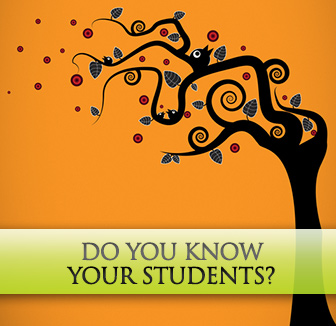
How many times have you walked into a classroom and the class was noisy and not paying attention and you thought ‘I wish I knew how to get through to them’?
Have you doubted your lesson content or your execution of your lesson plans? Nine times out of ten, while your lesson planning, content, and execution will be more than adequate; it could be a connection with the students that you’re missing. You may not really know who your students are.
At the beginning of my career, I taught for two years in Korea and this lesson did not occur to me immediately. I did want to know my students’ names but every request for the seating chart was answered with a blank stare followed with “why?” My fabulous set of co-teachers didn’t really get to know the students except their names when necessary (for discipline purposes), so they couldn’t fathom why on earth the foreign teacher would need that information. A stroke of good fortune hit me half way through my second semester teaching. I had to teach alone (not usually allowed in public schools) for the remainder of the semester and I was given the seating chart and student list for each class I taught. As it turns out this information that I wanted so desperately, was in a word - useless; homeroom teachers constantly changed the seating and lists, and were definitely not going to communicate these changes to me. I needed a new plan. The idea came from the students. They were always looking for reasons to talk to interact with me. Why couldn’t I do the same? Thus began my journey of learning and loving the students I would teach for two years.
How do you get to know your students? Even if lesson planning has you bogged down, you’re tired from a really rough week, or co-workers are just giving you a hard time, make your students a priority: ask what music they like; who their favorite music artist is; and what their favorite subject is. Make sure to compliment your students, not just on their English, but on a new haircut, how tall they are, or how smart they are. Students need to hear that from their teachers, and you making them feel like individuals who matter to you, can make a world of difference. I can’t emphasize this enough - learn their names or what they prefer to be called. It is a great way to show them you know who they are, instead of just being student number 120.
So, you may ask: “How do I get to know my students when most of them are extremely low level English Language Learners (ELLs)?”
My question to you is how do you teach them? It’s the same. Just make time between classes, before school (walk with them to school if you walk and see them walking), and after school. My students used to walk me to my bus stop (after school) and stay and talk with me until my bus came. We didn’t talk about much, but they were talking. Sometimes they would pull out artwork they did in school and point and say they liked something in the picture. In the process I learned their names, where they lived, if they had siblings, how old the siblings were, and what they liked and didn’t like. After you do this a lot, over time in the classroom you will see them modify their behavior when you show you remember who they are, as individuals. Call on them in class to read a sentence about cats, because you know they like cats and have cats at home. Allow them to teach you. I learned most of the Korean I know from my students because they were very demonstrative. They were like miniature KSL (Korean as a second language) teachers! By allowing them to teach you, you show an enthusiasm for something that is important to them and, in doing so, create bonds of mutual respect.
Students want to connect with you and they want you to like them.
That is an innate desire in students, specifically elementary and middle school, but even high school students want to be liked and loved. No matter what any educational guide or teaching guideline says, love works in the classroom. Don’t be afraid to show your love to your students, encourage them, hug them (if you’re allowed), and comfort them. It transforms your students and it transforms you. Love is investment not easily thrown to the side, which means not only you, but also your students, will have a motivation to participate, learn, and grow in the classroom. Take the time to know and love your students and it will transform the way you teach and how your students learn. So, how can you ‘get through’ to your students, even when all odds are against you? Let them show you who they are.
P.S. If you enjoyed this article, please help spread it by clicking one of those sharing buttons below. And if you are interested in more, you should follow our Facebook page where we share more about creative, non-boring ways to teach English.








